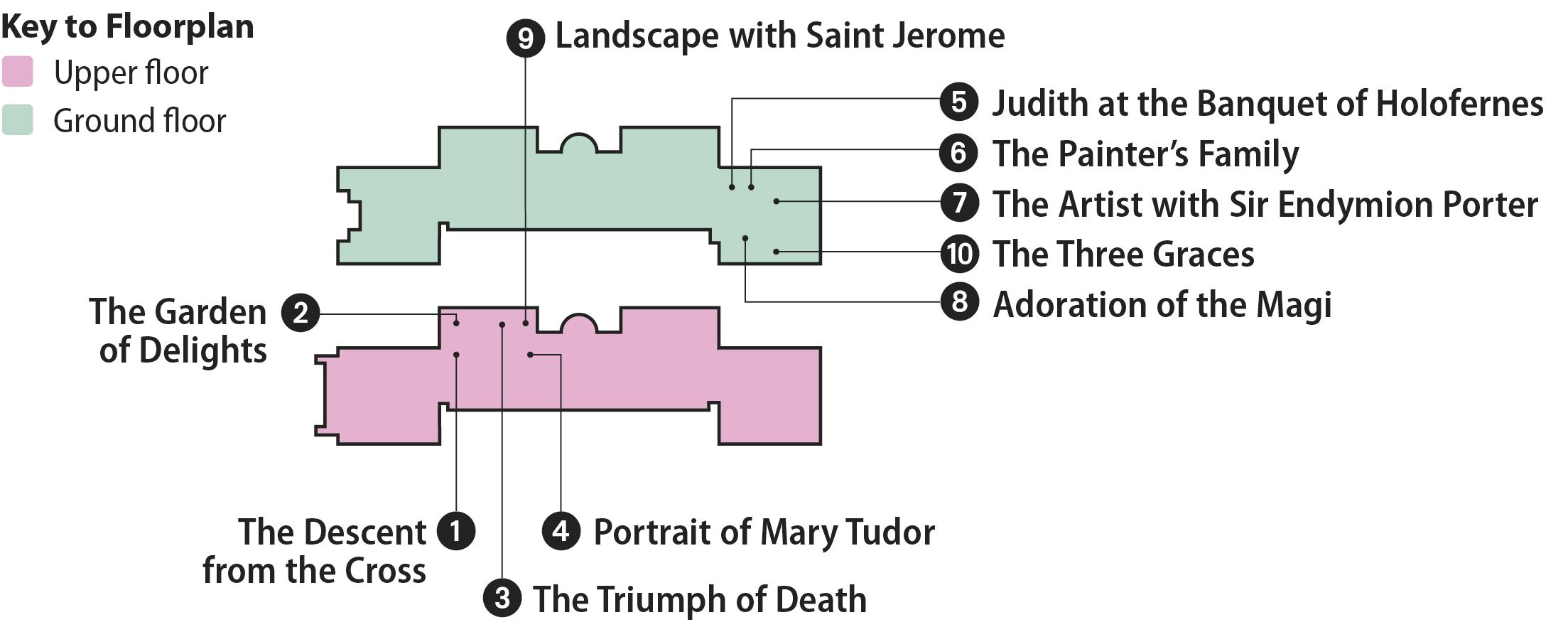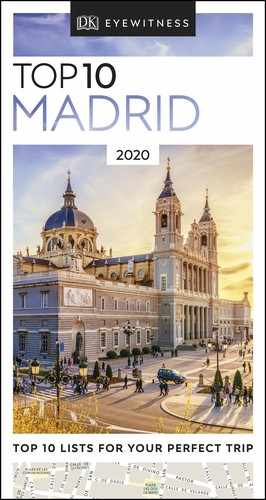FLEMISH AND DUTCH PAINTINGS

1. The Descent from the Cross
Felipe II hung this beautiful composition (c.1435) by Rogier van der Weyden (1399–1464) in El Escorial. It was moved here after the Civil War.

The Decent of the Cross by Rogier van der Weyden
2. The Garden of Delights
The meaning of this famous and unsettling work (1500) by Hieronymus Bosch (c.1450–1516) is hotly debated. The traditional view is that it is a warning against earthly pleasures.
3. The Triumph of Death
This terrifying version of the Dance of Death (c.1562–3) is by Flemish master, Pieter Breughel the Elder (c.1525–69).
4. Portrait of Mary Tudor
Antonis Mor (1517–76) painted this superb portrait in 1554 of the 37-year-old Queen of England, who was to marry Felipe II.
5. Judith at the Banquet of Holofernes
This 1634 painting is the only work in the Prado by Rembrandt (1606–69). Judith’s maid can be seen carrying the sack into which Judith will later place the head of her enemy, Holofernes.
6. The Painter’s Family
Jacob Jordaens (1593–1678) was one of the finest portrait artists of the 17th century, as can be seen in this 1622 painting of himself with his wife and daughter. The painting is full of symbols of marital fidelity.
7. The Artist with Sir Endymion Porter
This double portrait painted from 1632–7 by Anthony van Dyck (1599–1641) shows him with the diplomat Endymion Porter, his friend and patron at the court of King Charles I.
8. Adoration of the Magi
Peter Paul Rubens (1577–1640) first painted this in 1609 but returned to it in 1628 to add three strips that included various figures and his self-portrait.
9. Landscape with Saint Jerome
This 1516–17 Joachim Patenier (1480–1524) work depicts the saint gently removing a thorn from the paw of a lion.
10. The Three Graces
This erotic masterpiece (c.1635) by Rubens was inspired by classical sculpture. It features Love, Desire and Virginity, two of whom were modelled on the artist’s wives.

The Three Graces by Peter Paul Rubens
FURTHER EUROPEAN HIGHLIGHTS IN THE PRADO
The highlights of the small but valuable German Collection (room 55B ground floor) are Albrecht Dürer’s Self Portrait, painted in 1498, one of a quartet of paintings by this Renaissance master, and his depictions of Adam and Eve. Most of the French Collection dates from the 17th and 18th centuries (first floor, rooms 2–4). The landscapes of Claude Lorrain and the work of Nicolas Poussin are outstanding. Felipe II began collecting Classical sculptures (ground floor, rooms 71–4) in the 16th century, mostly Roman copies of Greek originals. Look out for the three Venuses – Madrid Venus, Venus with a Shell, Venus of the Dolphin – and the priceless San Ildefonso Group, dating from the reign of the Emperor Augustus (1st century AD). The Dauphin’s Treasure (basement) was inherited by Felipe V, heir presumptive to Louis XIV of France. The fabulous collection of goblets, glasses and serving dishes was made from precious stones (jasper, lapis lazuli, agate and rock crystal) and encrusted with jewels.

Self Portrait by Albrecht Dürer, painted in 1498.
TOP 10 EUROPEAN WORKS OF ART
1. Self Portrait, Albrecht Dürer (German Collection)
2. Hunt at the Castle of Torgau in Honour of Charles V, Lucas Cranach the Elder (German Collection)
3. St Paula Romana Embarking at Ostia, Claude Lorrain (French Collection)
4. Parnassus, Nicolas Poussin (French Collection)

Parnassus by Nicolas Poussin (1594–1665)
5. San Ildefonso statues (Classical Sculptures)
6. Madrid Venus (Classical Sculptures)
7. Venus with a Shell (Classical Sculptures)
8. Statue of Demeter (Classical Sculptures)
9. Onyx salt cellar with Mermaid (Dauphin’s Treasure)
10. The Hunt Vessel (Dauphin’s Treasure)
